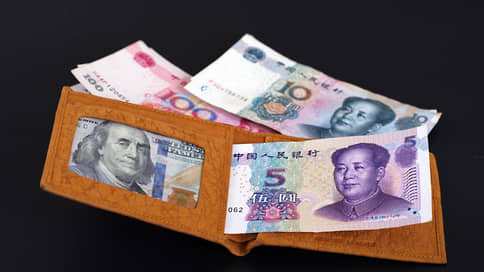Businesses have chosen the yuan, while citizens remain loyal to unfriendly currencies
[ad_1]

Corporate clients of Russian banks are actively replacing the dollar and euro with yuan in their accounts. According to the Central Bank, the share of “non-toxic” currencies in the accounts of legal entities has reached 42%. Mostly corporate clients use them for settlements, while individuals consider the currency as a store of value and are not yet ready to exchange dollars and euros for a “friendly” but low-income yuan. They are also in no hurry to switch to rubles, experts say, expecting further devaluation of the Russian currency.
Foreign currency balances on companies’ accounts in Russian banks in “unfriendly” currencies are rapidly declining. By the beginning of June, their share had dropped to 58% of the total volume of foreign currency deposits, whereas at the beginning of the year it exceeded 76%.
This is evidenced by data on deposit and current accounts of legal entities from the review of the risks of financial markets by the Central Bank, published the other day. If the current pace is maintained, the share of funds in “friendly” currencies by autumn may exceed half of the total foreign currency accounts.
The banks confirm the demand for placement of funds of corporate clients in “friendly” currencies, we are talking mainly about the yuan. Sberbank noted that “since the beginning of the year, the amount of funds in yuan has quadrupled.”
At VTB, in the first half of 2023, the volume of placed corporate funds in Chinese currency more than doubled and amounted to CNY 1.14 billion. By the end of the year, the bank expects to double this figure. In the MKB, in the first half of the year, the growth of the corporate portfolio in yuan by more than 1.5 times. In Rosbank since the beginning of the year, the portfolio of yuan deposits of legal entities has grown by 22.5%.
“The dynamics of placing deposits in yuan since the beginning of the year is positive,” Alfa-Bank says. Sovcombank still offers legal entities deposits in dollars and euros, but they also note a significant increase in demand for opening deposits in yuan.
At SDM Bank, where, in addition to yuan, deposits are also available in dollars and euros, the growth of depositors in Chinese currency since the beginning of 2023 amounted to 10%. At the same time, the bank notes, “that, unlike deposits in yuan, the volume of deposits in dollars and euros does not grow, but does not fall either, as there are a number of customers who still trust these currencies.”
The “window” for making payments in “toxic” currencies still exists, but it is gradually closing, one of the bank analysts notes. As a rule, such payments are made through subsidiaries of foreign banks. The number of Russian banks dealing with “unfriendly” currencies is decreasing as the sanctions lists expand.
Among the “friendly” currencies, the yuan leads due to its liquidity. At the same time, companies may accumulate yuan liquidity. “Growth of deposits of legal entities in “friendly” currencies indicates a change in the currencies used in foreign trade settlements of Russian companies,” notes Natalia Bogomolova, an analyst at NRA banking ratings.
At the same time, in the segment of foreign currency deposits of individuals, the share of the dollar and the euro is declining much less dynamically. According to the Central Bank, by June 1, they accounted for a little less than 87%.
Opening foreign currency deposits for retail clients, unlike companies that have foreign exchange earnings, is largely an investment decision. “Investment goals do not motivate citizens to convert so much, especially since they already bear increased ruble expenses after last year’s price increase, the savings rate has decreased,” explains Yury Belikov, Managing Director for Validation at Expert RA.
In addition, rates on yuan deposits (up to 4% per annum; see Kommersant of June 14) do not look the most attractive against the background of rates on ruble deposits (the average maximum rate in large banks is about 8% per annum). While companies use the currency as a means of payment, Ms. Bogomolova explains, the population “is in no hurry to convert “unfriendly” currencies into rubles, perhaps waiting for its further devaluation and the chance of exchanging at a higher rate.”
[ad_2]
Source link





